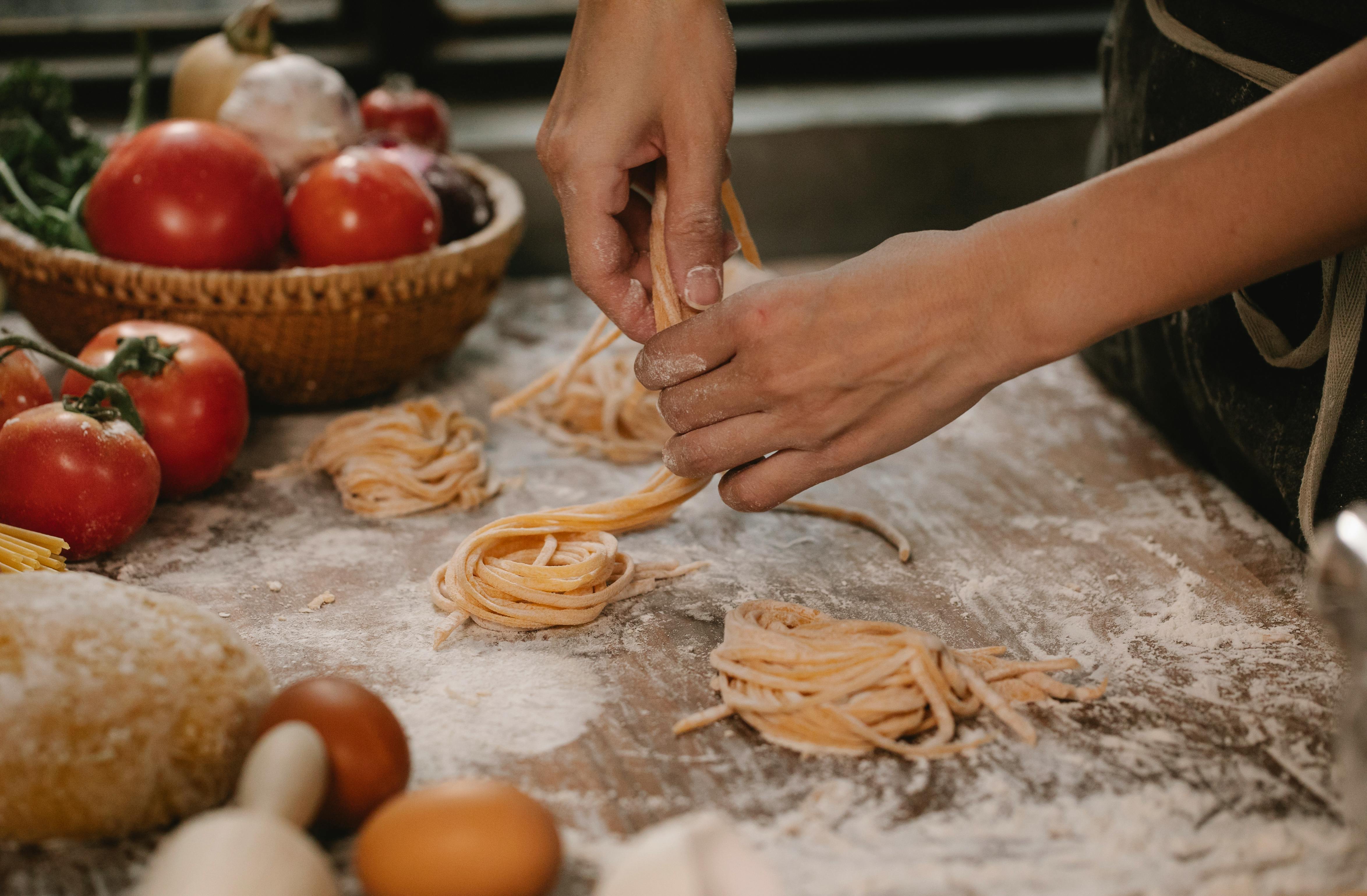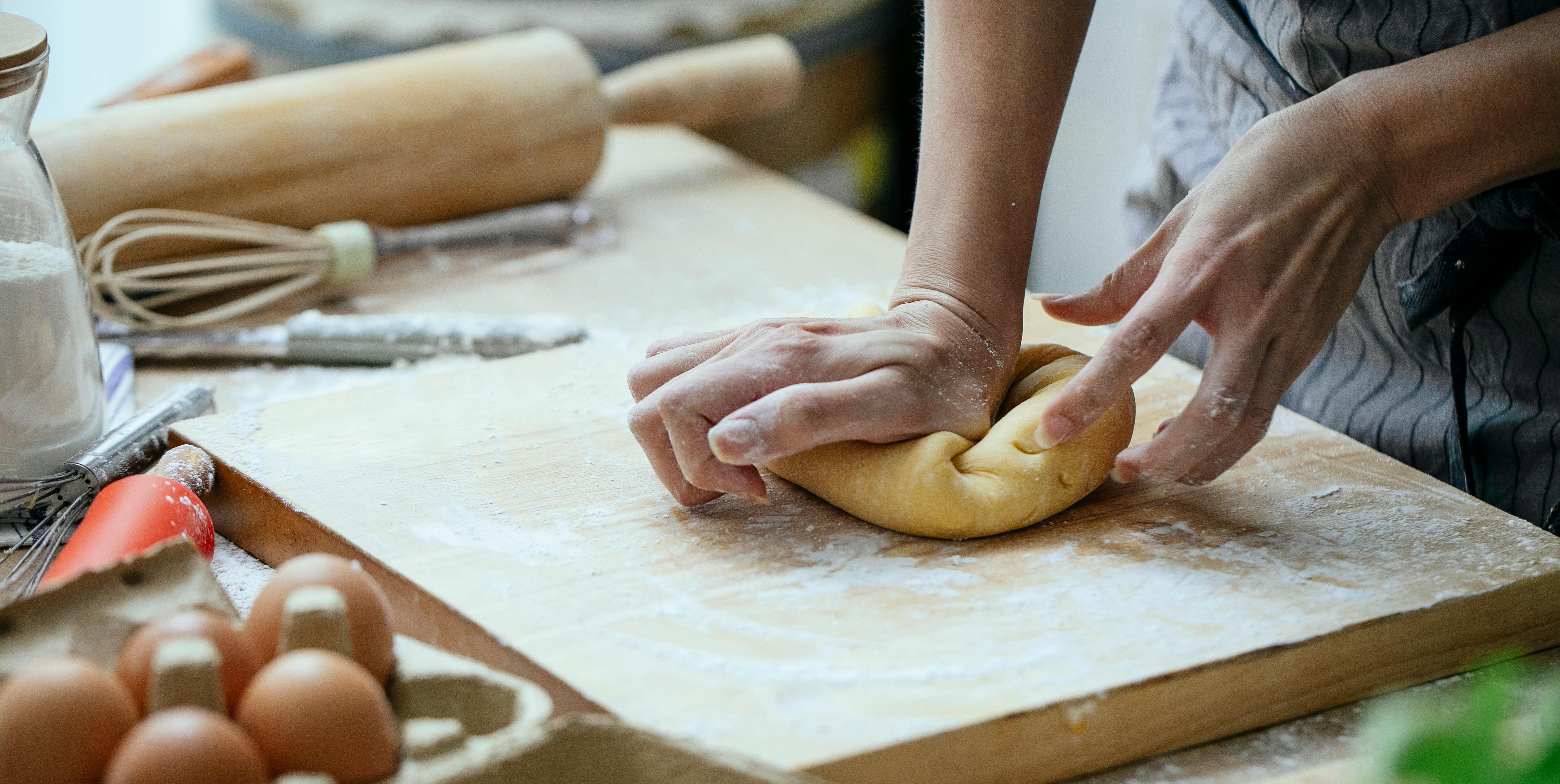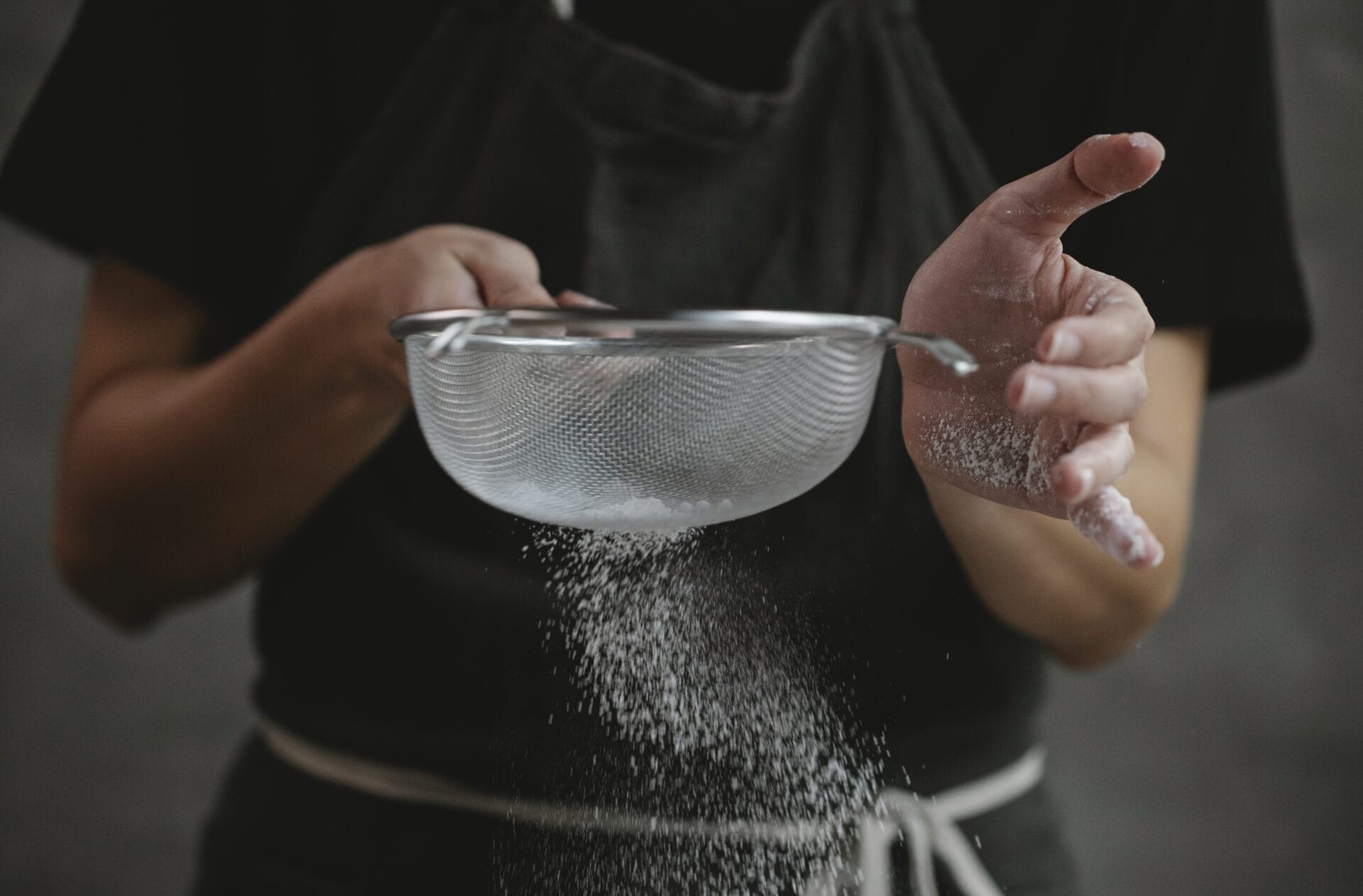Water and flour are two basic ingredients that can be combined to create a variety of delicious dishes. When mixed together, water and flour create a thick paste-like dough that can be used to make anything from breads and pastries to pizza dough and tortillas. With just a few simple ingredients, you can make a wide range of recipes that are sure to satisfy your taste buds.Water and flour make dough, which can be used to make bread, pastries, pizza dough, and more.
Basic Recipe for Making Dough
Making dough can be a fun and creative activity. With a few simple ingredients, you can make a variety of delicious doughs for baking or cooking. Here is a basic recipe for making dough that can be used as a starting point to make almost any type of dough.
To make the dough, you will need all-purpose flour, salt, water, and oil. Start by measuring out two cups of all-purpose flour into a large bowl. Add one teaspoon of salt and stir to combine the ingredients. Then slowly add one cup of cold water and four tablespoons of oil and mix until the ingredients are completely incorporated.
Once the ingredients are combined, use your hands to knead the mixture until it forms a smooth ball of dough. If the mixture is too dry, add a little more water; if it’s too wet, add a bit more flour until it forms the desired consistency. You can also add additional flavorings, such as herbs or spices, at this point if desired.
Once the dough is ready, you can roll it out on a lightly floured surface for baking or cooking purposes. Alternatively, you can wrap it in plastic wrap and refrigerate it for up to three days before using it in your recipes.
With this basic recipe for making dough, you can create almost any type of delicious baked goods or dishes that require dough as an ingredient. The possibilities are endless!
Ingredients Required for Making Dough
Making dough requires a few ingredients. The most basic ingredients are flour, water, oil, and salt. Flour is the main ingredient used for making dough and it provides the bulk of the texture and structure. Water is used to bind the ingredients together and give the dough its shape. Oil helps to keep the dough from sticking to surfaces when kneading and rolling. Salt is added for flavor and helps to balance out the sweetness of some recipes.
Other ingredients that can be added to a dough recipe include sugar, yeast, butter, eggs, milk, vinegar, baking soda, herbs, spices, nuts and dried fruits. Sugar adds sweetness to recipes like cinnamon rolls or sweet breads. Yeast is a type of leavening agent that helps bread rise when baking. Butter adds flavor and moisture to recipes such as biscuits or pie crusts. Eggs add structure and richness to certain types of doughs such as brioche or challah breads. Milk also adds flavor and moisture while vinegar helps with rising in some recipes like sourdough breads. Baking soda is an alkaline leavening agent that helps create a light texture in baked goods such as cakes or muffins.
Herbs, spices, nuts and dried fruits can be added to many types of dough recipes for added flavor and texture. Herbs such as rosemary or oregano are great additions to savory breads or pizza crusts while spices like cinnamon or nutmeg are perfect for sweet treats like cinnamon rolls or pies. Nuts can be chopped up or ground up into a fine meal then added into recipes like biscotti or cookies for extra crunchiness while dried fruits like raisins or cranberries offer sweetness when baked into items such as scones or muffins.
These are just some of the ingredients that can be used in making dough recipes but there really is no limit on what you can put into your creations! Have fun experimenting with different flavors and textures until you find something you love!
Mixing Together Water and Flour
Mixing together water and flour is a simple process that can be used to make a wide variety of recipes. The first step is to measure out the ingredients needed for the recipe. For most recipes, this means measuring out the proper amount of all-purpose flour and cold water. Once the ingredients have been measured, they should be combined in a bowl and stirred until they are fully incorporated. It is important to make sure that there are no lumps in the mixture as these can affect the texture of the finished product.
If the recipe calls for it, additional ingredients such as salt, sugar, or baking powder can be added at this point before stirring them in thoroughly. Once all of the ingredients have been combined, they can then be kneaded into dough if necessary or used as directed in the recipe. By following these steps, it is possible to quickly and easily mix together water and flour for any number of recipes.
It is important to note that different types of flour may require different amounts of water for proper mixing. For example, bread flour may require more water than pastry flour when making bread doughs or other baked goods. Additionally, certain recipes may call for warm or hot water instead of cold depending on what type of product is being made. Be sure to read through a recipe thoroughly before beginning so that you know what type of water and amount is needed for a particular recipe.
Mixing together water and flour does not have to be complicated or time consuming. By following these simple steps, it is easy to make a variety of recipes with minimal effort. With practice and experimentation you can soon become an expert at mixing together water and flour!
Making Dough at Home
Making dough at home has countless benefits. The most obvious one being that you can enjoy a fresh, hot pizza or a freshly baked loaf of bread in the comfort of your own kitchen. Not only is the flavor superior to store-bought, but you also have control over the ingredients used, making sure that what goes into your food is healthy and safe for your family. Plus, it’s a fun activity to do with your children or friends.
Making dough at home is also an economical choice. Store-bought dough can be expensive, whereas making your own allows you to buy ingredients in bulk and save money in the long run. You can also experiment with different recipes and techniques to find out which one works best for you and your family’s taste preferences.
Another great benefit of making dough at home is that it is surprisingly easy to do. All you need are some basic ingredients such as flour, yeast, salt, and water. With just a few simple steps, you can have fresh dough ready for whatever delicious creation you plan on baking! And unlike store-bought dough, homemade dough doesn’t contain any preservatives or artificial flavors so it will always taste fresher and more wholesome than anything from the store.
Overall, making dough at home offers a variety of advantages that makes it an attractive option for anyone who loves to bake or just wants a healthier alternative to store-bought items. It’s also incredibly easy and economical so there’s no reason not to give it a try!

Different Types of Dough That Can Be Made With Flour and Water
Making dough is an essential part of baking and cooking, and there are many types of dough that can be made with flour and water. The most common doughs are bread dough, pizza dough, and pastry dough. Bread dough is the simplest form of dough and is made from a combination of flour, water, salt, yeast, and sometimes oil or butter. This type of dough is used to make a variety of breads such as loaves, rolls, buns, flatbreads, tortillas, pita breads, and more.
Pizza dough is similar to bread dough but it often includes sugar or honey for flavor and a higher ratio of yeast for leavening. This type of dough is used to make pizza crusts in both thin-crust or thick-crust styles. Pizza crust can also be made with other ingredients such as cornmeal or potatoes for a unique texture.
Pastry dough is the most versatile type of flour-and-water based dough as it can be used to make a variety of different pastries such as pies, tarts, empanadas, turnovers, croissants, puff pastry shells, biscuits, scones and many other desserts. The key difference between pastry doughs and other types of flour-and-water based doughs is that they usually contain fat such as butter or shortening which helps create flaky layers in the finished product.
Pizza
Dough is a key ingredient in pizza, which makes it one of the most popular dishes to create with dough. Pizza dough can be made from scratch or store-bought, and it can be used to make a variety of different types of pizza. From classic cheese to unique toppings, pizza is the perfect dish for any occasion.
Calzones
Calzones are another great dish to make with dough. These savory snacks are made by folding pizza dough over a filling of your choice, such as cheese, vegetables, or meats. Calzones can be baked or fried and are a great way to use up leftovers from earlier meals.
Stromboli
Stromboli is similar to calzones, but it is larger and often contains more ingredients such as meats and cheeses. Stromboli can be served as an appetizer or entree, depending on the size and ingredients used. The dough is rolled into a log shape and then filled with your desired ingredients before being baked in the oven.
Stuffed Breads
Stuffed breads are another delicious dish that can be made with dough. These savory snacks are made by stuffing bread dough with a variety of fillings such as cheese, herbs, vegetables, meats, or even sweet fillings like jams or fruits. Stuffed breads can be cooked in the oven or on the stovetop for an easy meal.
Bread Bowls
Bread bowls are another great way to use dough for meals. These hearty dishes consist of hollowed out bread bowls filled with soups, stews, curries, chilis, or other hearty dishes for a filling meal that is sure to satisfy any appetite. Bread bowls are also great for serving dips or salads at parties.
Over-Kneading Dough
One of the most common mistakes when making dough is over-kneading. When the dough is over-kneaded, it can become too elastic and springy, making it difficult to roll out and shape. To avoid this, knead the dough until it is just smooth and elastic, not overly stiff or sticky. Once you have reached this point, stop kneading and allow the dough to rest for a few minutes before rolling out or shaping.
Not Letting Dough Rest
Another mistake when making dough is not allowing it to rest before shaping or rolling out. This step is very important as it allows the gluten in the dough to relax and become more pliable. If you try to roll out or shape the dough without letting it rest first, you may end up with an uneven texture or shape. It’s best to let your dough rest for at least 10 minutes before shaping or rolling out.
Not Adding Enough Flour
When making dough, it’s important to add enough flour so that the mixture is neither too sticky nor too dry. If you add too little flour, your dough will be too sticky and difficult to work with. On the other hand, if you add too much flour your bread may be dense and heavy. To find the correct balance between wetness and dryness in your dough, gradually add more flour until you reach a consistency that’s not too sticky but still slightly tacky.
Not Using Fresh Ingredients
Using fresh ingredients is essential when making bread or any other type of baked goods. If you don’t use fresh ingredients, your bread won’t rise properly and may end up with a stale taste. Make sure your yeast is active before using it in your recipe, as this will ensure that your bread rises properly. Additionally, make sure all of your other ingredients such as butter, sugar and salt are fresh as well.

Conclusion
Water and flour are two essential ingredients for many recipes. They are versatile, easy to find at any grocery store, and can be used in a variety of dishes. From breads and pastries to pasta, noodles, sauces, and more, water and flour can be used together to make delicious meals. Not only can they be combined in traditional recipes, but also adapted to suit any dietary preference or dish.
Making food with water and flour is a great way to get creative in the kitchen. With some practice and experimentation, you’ll be able to create your own unique creations that your family will love. Water and flour make a powerful combination that will always stand the test of time.
No matter what type of cuisine you’re making or what kind of ingredients you’re using, water and flour will always provide the perfect base for your culinary creations. So go ahead — experiment with different recipes — you won’t regret it!

